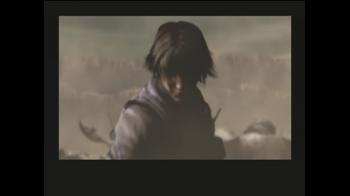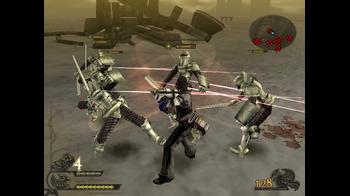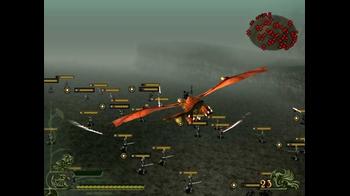
Drakengard Retrospective Review
Back in 2004, there wasn't anything quite like Drakengard. While most game tend to have happy-go-lucky stories, or at least mask their darker moments, Drakengard had its grimdark nature front and center, not giving players solace in any hopeful or happy moments. Being able to control a dragon in the air was also a good selling point gameplay wise for fans of the Xbox title Panzer Dragoon Orta. These points, among others, gave Drakengard the chance to really become something unique. Unfortunately, there is a large number of issues with the PlayStation 2 title, which made the game rather disappointing in the past... and close to unplayable by today's standards.
Drakengard stars Caim, a rather grim, bloodthristy protagonist. He is badly wounded in the game's opening cutscene, and is forced to make a pact with a dragon in order to survive. The price for the pact is Caim's voice, but now he and the Dragon can exact revenge on the Empire, who murdered his parents and are trying to release destruction upon the world by destroying the world's seals... and one of which just happens to be his sister.
The plot doesn't sound incredibly interesting (and maybe even a bit confusing), but it's really more the tone Drakengard sets and the demented characters you meet along the way that sets the game apart. Caim is never really viewed as a 'hero'; while he seems to be... well, not a terrible guy in the first few chapters, he becomes significantly more brutal and apathetic as the plot advances. Moreover, the allies you recruit to your cause are of rather shaky moral standards themselves, and one is quite literally insane and enjoys a healthy meal of children to round out her day.
This, with the overall feel that the Empire is always a step ahead and hellbent on ruining the world gives Drakengard a very hopeless, even macabre atmosphere that many games of the time did not try to stumble upon.
Unfortunately, just because Cavia tried something darker with Drakengard does not mean it was done well. The game itself suffers from somewhat poor, stilted writing and fails to really explain important aspects of the game's lore so that the player can understand the gravity of the situations presented. You never really understand the point of a pact for the Dragon or other creatures, nor really understand the seals and the Goddess; they're... well, just there. This already somewhat hard to understand plot is made far worse by the amount of dialogue cut from the North American version of the game; because of it, you miss some interesting, dark secrets of many of the characters, and sometimes leads to awkward conversations. Finally, top if off with some of the best moments hidden beyond the first ending, and you have a story that'll leave the player unsatisfied.
Drakengard's gameplay is split into two types of missions. Ground missions take place... well, on the ground. During ground missions there are typically hundreds of enemies to cut through as Caim, and for the most part the missions revolve around killing targets. These missions are the meat of the game, but unfortunately are rather bland. Caim has normal and magical attacks to take down foes, and appropiately mashing the Triangle button can unleash a special attack to help clear the general vicinity. However, there isn't much more to combat than that, and it quickly gets monotonous.
You can also bring the Dragon into most Ground Missions, and offers a somewhat over-powered solution to wiping out the foes presented. It does take away experience from Caim, though, and many times archers and magically resistant foes are on the field as well, which can quickly and easily knock Caim off of the Dragon.
Instead, the Dragon gets use during Aerial Missions. As one would expect, Aerial Missions have the Dragon taking care of various flying enemies in the air. The Dragon's main attacks are a weak homing shot and a strong unguided ballistic shot. Most of these missions are short and don't add much to gameplay, but you have to master the Dragon's somewhat clunky controls to beat the game, as boss battles are only relegated to the air.
Drakengard is not much of a looker, either. While the CG cutscenes have actually held up well over the years, the rest of the game has not, and is a bore to look at. The battlefield appears to always be covered in a grey fog, complemented with browns, more grey, and the occasional white to make for a very bland landscape. Enemies also don't change much throughout the game (besides Chapter 4 which has you killing subhuman enemies), and makes combat even more drab than it already was.
There's something about Drakengard that really makes you want to like it. Cavia really tries to do something different with this title, with the plot screaming hopelessness and with characters that are far from heroes. It's a shame, really, that the game itself is an absolute slog to play through, and the story was more or less butchered (due in no small part to the fair amount of censorship with the North American version). Honestly, it's easier--and at some points, more comprehensible--to read a synopsis of the plot rather than to play Drakengard itself; trying to run through hours of boring ground and aerial missions will ruin the title's few interesting points.


